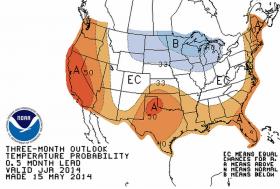Tag: summer
23 Ways to Improve Your BBQ

May 22, 2014 | By Pamela Nisevich Bede, M.S., R.D.
Sure, your backyard barbeque is meant to be a party, but that’s no excuse to offer foods that will ensure you’ll avoid stepping onto the beach — and the scale. In fact, every BBQ has room for a few entrees and sides that keep your health-conscious guests happy, and your body looking and feeling good. Try the following tips and you are sure to wow your guests and keep them asking for more — without them ever knowing they were “indulging” in healthier options.
See all 23 tips here, at Livestrong.com
Long, Warm Summer On Tap According To Weather Service Outlook
By Tom Banse, NW News Network
The supercomputers at the National Weather Service’s Climate Prediction Center have crunched long-term trends to produce an outlook for June, July and August. For most of the Northwest, the forecast gives a strong probability of above-normal temperatures.

Seattle-based meteorologist Johnny Burg said the trend is strongest along the West Coast and becomes less pronounced as you go inland to Idaho.
“Usually our summers here are pretty warm and dry compared to the weather patterns throughout the year,” Burg said. “But what the CPC is saying is that we are looking at maybe having warmer than normal temperatures for this summer.”
The summer outlook for rainfall is neutral for the Pacific Northwest, but calls for above average rainfall chances in the central Rockies. There’s no drought relief in sight for parched rangelands in southern Oregon and southwest Idaho.
The Climate Prediction Center notes a transition to El Niño conditions is underway in the tropical Pacific, but that global weather phenomenon is not driving the forecast for a warmer than normal summer in the Northwest. Burg said that there is usually a lag before El Niño’s effects can be seen in the region’s local weather.

